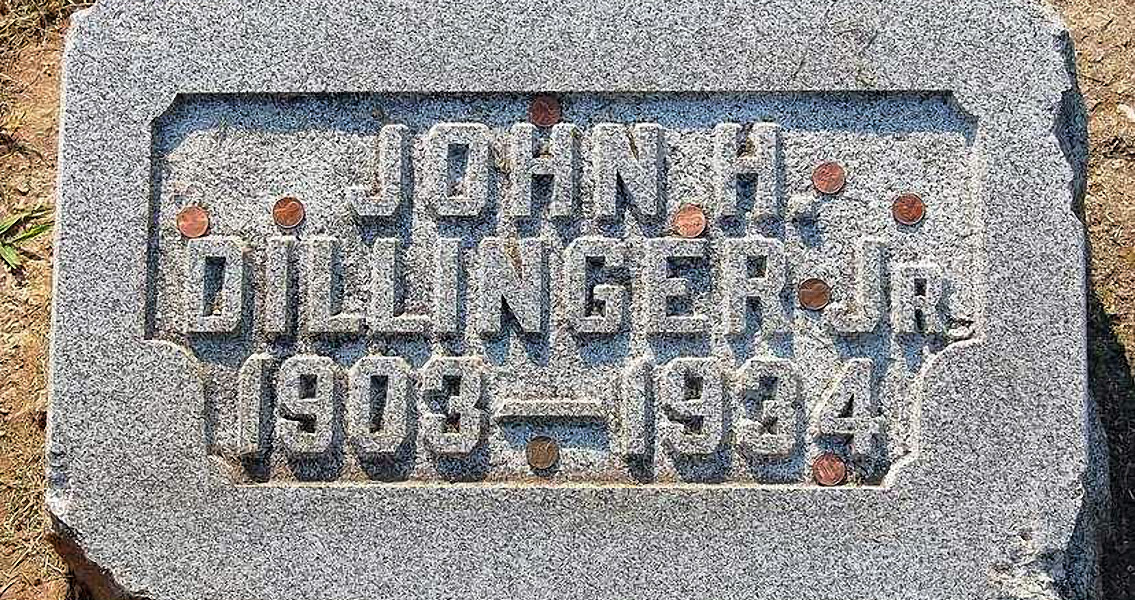<![CDATA[John Dillinger Jr., one of the most notorious criminals in US history, was gunned down by the FBI outside Chicago's Biograph Theatre on 22nd July, 1934. Born in Indianapolis in 1903, Dillinger's adolescence was blighted by confrontations with authority. He left school early, and soon got into trouble in his first job as a machinist, causing his father to move the family to rural Indiana in the hope the countryside could calm Dillinger's erratic behaviour. A first brush with the law in 1923 saw Dillinger join the US navy to escape punishment. Perhaps unsurprisingly he had deserted by the end of the year and returned home to Indianapolis. A year later he was imprisoned for his role in a botched robbery of a grocer. Dillinger received two consecutive sentences - one of two to fourteen years, the other of ten to twenty years. Breaking out of jail in 1933, Dillinger launched the crime spree which has immortalised him. Armed with weapons they had stolen from a police armory, Dillinger's gang launched a series of bank robberies in Wisconsin, Indiana and Chicago. Making off with around $130,000 dollars, the gang also became the most wanted men in the US, a result of the four police officers they had killed. Arrested again in January 1934, Dillinger soon escaped using a pistol (which may have been fake) to round up all the prison stuff and lock them in cells before making his retreat. Once free, Dillinger formed a new gang and embarked on another series of bank robberies across the United States, with the FBI throwing substantial resources into capturing the dangerous criminal who was slowly turning into a national celebrity. Dillinger returned to Chicago in April 1934, following an FBI raid on his hideout in Wisconsin. He lived in a safehouse in the city, and had a facelift to conceal his identity. He participated in his final robbery on 30th June, in South Bend, Indiana. Dillinger's gang stole $30,000 in a bloody robbery which saw one police officer and a member of the Dillinger gang killed, and four civilians injured. The FBI were finally able to track and trap Dillinger when one of his accomplices, Anna Sage; a Romanian born brothel worker who until then had helped to keep Dillinger hidden, agreed to work with the authorities in exchange for leniency in an impending deportation hearing and the chance of winning a chunk of the $25,000 bounty that had been placed on Dillinger. On the evening of 22nd July, Sage and Dillinger went to see the gangster movie Manhattan Melodrama at the Biograph Theatre. A force of twenty FBI agents and police officers positioned themselves outside the building, in preparation for Dillinger’s exit. Sage had agreed to wear a red dress, so the officers would be able to identify her. At 10:40pm, Dillinger and Sage left the cinema. The authorities immediately pounced, ordering Dillinger to surrender, but he bolted. He made it less than a block before being gunned down in a hail of bullets. Official reports claimed the FBI and police had opened fire because Dillinger had pulled a gun. Dillinger died at the scene, close to an alleyway next to the theatre. The response to Dillinger’s death shows the extent of the celebrity status he had garnered, despite the at times brutal nature of his robberies. Souvenir hunters lined up to dab handkerchiefs in his blood at the scene of his shooting, while thousands went to the morgue to see his body. At his funeral, 5,000 people came to witness his burial, despite attempts to keep the date and location a secret. At a time when the United States was gripped by the Great Depression, the fascination with Dillinger can be put down to a roguish, ‘Robin Hood’ type mythology which surrounded him. The banking system was held up as the source of the United State’s economic calamity. Dillinger’s frequent attacks on banks and his rebellious personality turned him into something of an anti-hero for many Americans. Even now, there are some who argue Dillinger was not killed in Chicago on 22nd July. Pointing to inconsistencies in medical records, they claim that someone other than John Dillinger was gunned down outside the theatre. Suspected motives for this supposed cover-up vary, from desperate attempts by the FBI to prove they could catch the man they had declared public enemy number one, to the belief that Dillinger had organised the whole deception himself, so he could retire into obscurity. Image courtesy of Wikimedia Commons user: Wildhartlivie]]>
Dillinger Killed in Chicago
